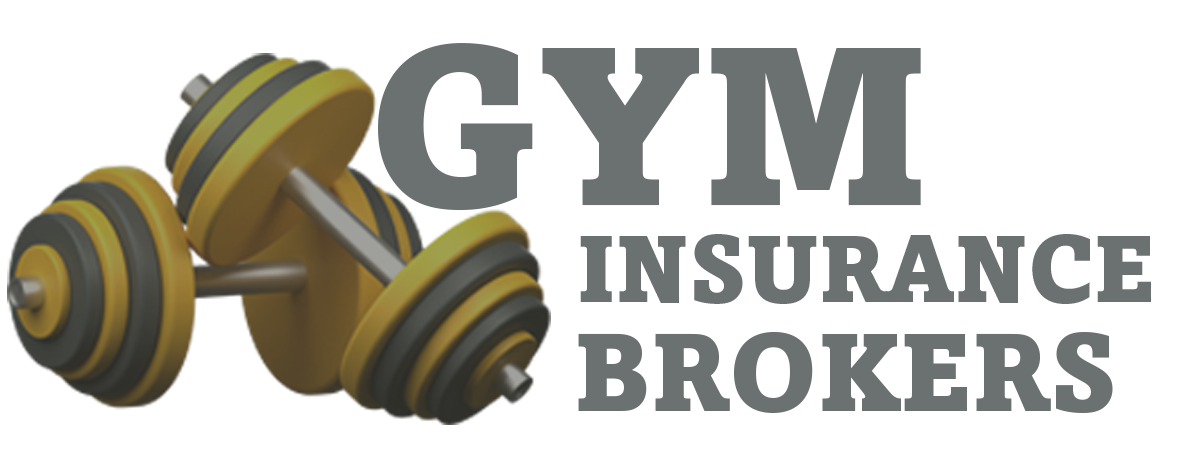The 5-Step Legal Insurance Audit Every Australian Gym & Dojo Must Conduct
The Truth Behind Waivers: Why They're Not Enough to Protect Your Martial Arts School

A Specialist’s View from MAAIS & Gym Insurance Brokers on How Waivers Really
Work in Court
Introduction: The Dangerous Illusion of the “Signed Waiver”
It’s a familiar ritual for every gym and martial arts school owner: before a new member
joins, they sign a waiver. Maybe it’s a neatly formatted “Assumption of Risk” form, or a
multi-page “Release of Liability.” Owners often file these papers away, feeling secure
that their business is now legally bulletproof.
But here’s the uncomfortable truth: your waiver will not save you in court.
At Martial Arts & Fitness Insurance Specialists (MAAIS) and Gym Insurance
Brokers, we’ve seen firsthand how instructors, gyms, and martial arts clubs are caught
off guard when their supposedly airtight waiver collapses under legal scrutiny. A waiver
may deter a casual complaint—but when a serious injury occurs, or a parent of a child
seeks compensation, the document that once seemed invincible can suddenly become
paper-thin.
The difference between thinking you’re covered and being covered can determine
whether your business survives a lawsuit. And that’s exactly where specialist
protection—the kind built by MAAIS, backed by Martial Arts Australia (MAA), and
delivered through Gym Insurance Brokers—becomes not just useful, but essential.
1. The Myth of the All-Powerful Waiver
1.1 What Most Instructors Believe
Many instructors genuinely believe that as long as their clients or students sign a
waiver, they cannot be sued for injuries sustained during training. It’s an easy
assumption to make—after all, the document states clearly that the participant
“assumes all risk” and “waives all rights to claim.”
But in legal reality, a waiver is not an absolute shield. It’s a single piece of evidence
among many that a court will evaluate when determining negligence, duty of care, and
foreseeability of harm.
MAAIS regularly reminds its clients: “A waiver cannot protect you from negligence—it
only demonstrates that your participant acknowledged risk.” Courts distinguish between
inherent risk (what’s unavoidable in martial arts or fitness activity) and negligent risk
(what arises from inadequate instruction, poor supervision, or unsafe premises). A
waiver does not excuse negligence.
1.2 The Reality in Practice
Here’s what often happens. A student signs a waiver, joins class, and suffers an
injury—say, a dislocated shoulder during a sparring drill. The parent or participant
lodges a claim, arguing that the instructor allowed mismatched partners or unsafe
conditions. The business owner assumes the waiver will nullify the claim—until the
insurer explains that the waiver doesn’t eliminate liability for negligence.
In fact, as Gym Insurance Brokers often caution, a waiver’s effectiveness depends on
how well the instructor upheld their professional duty of care. If the training environment,
instruction, or supervision was inadequate, no waiver will stand between you and a
potential payout.
2. Why Courts Challenge Waivers
2.1 Children Can’t Waive Their Rights
One of the biggest surprises to gym owners and martial arts instructors is this: a child’s
waiver is not legally binding.
Under Australian law, minors cannot contractually release rights or assume risk in a way
that prevents their parents from seeking compensation. Even when a parent signs on
their behalf, many courts have ruled that such waivers do not override a parent’s ability
to pursue a negligence claim on behalf of their child.
That means your “Tiny Ninjas” or “Mini-Warriors” classes—the most common source of
participation—carry the highest vulnerability. As MAAIS emphasizes in its risk briefings,
“If you’re teaching children, you must assume your waiver offers little to no defence in
court.” The real protection must come from professional liability insurance and strict risk-
management protocols.
2.2 Ambiguity, Formatting, and Comprehension
Courts look at how clear and understandable a waiver is. Dense legal jargon, small
fonts, or vague language about “all risks” may be dismissed as unfair or misleading. If
your student or parent didn’t fully understand what they were signing, the waiver’s
enforceability collapses.
A specialist broker like MAAIS reviews and provides waiver templates that meet
industry standards—clear, readable, and tailored to martial arts and gym activities. As
Gym Insurance Brokers note, “Clarity and transparency count as much as content. A
waiver that confuses is a waiver that fails.”
2.3 Negligence Overrides Everything
Even if a waiver is perfectly worded, signed by an adult, and clearly understood, it
cannot excuse negligence. Courts will ask:
Were safety procedures followed?
Was the activity appropriate for the participant’s age and skill level?
Was equipment properly maintained?
Were warnings given and supervision adequate?
If the answer to any of these is “no,” the waiver becomes irrelevant. As MAAIS often
tells school owners: “A waiver is not your first defence—it’s your last.”
Proper training standards, supervision ratios, and documented safety protocols—those
are what stand up best under scrutiny.
3. The Specialist’s View: Where Waivers Fit in a Real Risk Strategy
3.1 Waivers Are Administrative, Not Defensive Tools
From an insurance standpoint, a waiver’s main function is to document awareness. It
shows that a participant was informed of the risks and consented to participate
voluntarily. That helps your insurer establish that the activity involved inherent risks, not
concealed dangers.
However, MAAIS and Gym Insurance Brokers agree: a waiver only works when
integrated into a broader system of risk management, including:
Safe instruction procedures
Qualified, certified instructors (MAA membership)
Clear emergency response protocols
Active insurance cover tailored to your activity
If any of these are missing, your waiver has limited value.
3.2 The Insurance Perspective
At MAAIS, we regularly handle claims where the business believed the waiver “covered
everything.” The pattern is predictable:
1. A participant is injured.
2. The owner submits the waiver as the first line of defence.
3. The insurer finds evidence of unsafe practice, poor documentation, or outdated
forms.
4. The waiver is dismissed, and the liability policy becomes the real protection.
If that liability policy is generic or inadequate—such as a standard “gym business” cover
excluding martial arts contact or youth classes—the business is fully exposed.
That’s why MAAIS’s policies, designed in collaboration with Martial Arts Australia and
supported by Gym Insurance Brokers, specifically include Public Liability,
Professional Indemnity, and Participant Accident Cover for martial arts and fitness
environments.
A waiver cannot pay legal fees. Your insurance can.
3.3 Risk Documentation and Incident Reporting
When a claim arises, the insurer looks at your documentation trail:
Was there a signed waiver?
Was the class appropriately supervised?
Were instructors accredited under MAA or a recognised body?
Were mats and safety equipment inspected and maintained?
Was a detailed incident report completed immediately?
MAAIS provides clients with templates for incident reports and risk audits, helping
ensure the business has defensible records long before a claim ever reaches court.
A well-documented risk management process is often more valuable than a perfectly
written waiver.
4. Why Martial Arts Schools Are at Higher Risk
4.1 The Nature of Contact and Physical Instruction
Martial arts training involves controlled contact, repetitive practice, and occasional
accidents. Even with the best supervision, collisions, sprains, or overextensions can
occur. Courts recognise this—but they also expect instructors to apply progressive
training suited to age and experience.
MAAIS often investigates claims where the injury resulted not from the sport itself, but
from mismatched pairing, rushed progression, or overcrowded classes. In each case,
the waiver offered little defence because the instructor’s duty of care had been
breached.
4.2 Children’s Programs and Parental Claims
Parents are particularly vigilant when it comes to injuries. Even a small bump can
become a complaint if communication isn’t handled properly. Some parents assume the
waiver means the school is automatically at fault; others believe it proves they were
misled into a dangerous environment.
MAA’s guidance to affiliated schools is simple: communicate early and document
everything. An honest, professional approach combined with the backing of MAAIS’s
child protection and liability coverage will always outlast the false security of a
signed form.
4.3 Waivers and Reputational Risk
A waiver cannot stop reputational damage. In the age of social media, one dissatisfied
parent can broadcast an incident to thousands within hours. Even if the claim never
reaches court, the reputational cost can far exceed any payout.
That’s why MAAIS integrates crisis management and communication support into
its claims process. Gym and martial arts owners receive advice on managing the
conversation with parents, members, and the community—because reputation is as
valuable as coverage.
5. The Gym Owner’s Wake-Up Call
5.1 Fitness Centres Face the Same Trap
Gym owners often assume that because their clients are adults, their waivers are legally
ironclad. But the same principles apply: negligence cannot be waived, and courts
scrutinise the environment.
Slippery floors, broken equipment, unsupervised free-weight areas—all of these can
invalidate a waiver. Gym Insurance Brokers regularly handle claims where the waiver
existed but the gym’s maintenance logs didn’t. The result? Liability fell squarely on the
owner.
5.2 Group Fitness and Personal Training
Instructors delivering high-intensity group sessions or one-on-one training are also
vulnerable. If a client sustains an injury due to improper form correction, lack of spotting,
or equipment misuse, the waiver won’t cover professional error.
That’s why Gym Insurance Brokers, working alongside MAAIS, recommend every
instructor carry Professional Indemnity Insurance as a separate line of defence. It
covers instructional negligence—the very risk a waiver cannot address.
6. Inside the Courtroom: How Judges See Your Waiver
Imagine standing before a judge after an injury claim. The claimant’s lawyer presents
the waiver—but argues it was unfair, unclear, or signed under assumption of safety. The
judge then examines your conduct.
Questions that typically follow include:
Did the instructor meet the standard of a competent professional?
Were safety checks documented?
Was the risk inherent, or preventable?
Did the participant fully understand the waiver?
If your answers aren’t backed by clear records, qualified instructors, and appropriate
insurance, the waiver’s credibility crumbles.
As MAAIS often summarises in its training sessions: “A waiver might help you explain
the risk, but your insurance helps you survive it.”
7. Building Real Protection: The MAAIS Framework
7.1 Comprehensive Coverage Beyond Paperwork
MAAIS provides a complete framework for martial arts and gym operators, addressing
every layer of exposure that waivers miss:
Public & Products Liability – covers injuries or property damage to third
parties.
Professional Indemnity – protects against claims of negligent instruction or
poor supervision.
Participant Accident Insurance – supports students who suffer accidental
injury, regardless of fault.
Abuse & Molestation Cover – essential for any child-based program.
Property & Fit-Out Insurance – protects the facility, mats, and training
equipment.
Event Liability – covers demonstrations, grading days, and off-site classes.
With this protection in place, your waiver becomes a supporting tool, not your only
defence.
7.2 Integration with MAA Standards
Every MAA-affiliated school benefits from alignment between insurance coverage and
industry best practice. MAA’s professional standards mandate instructor qualifications,
child-protection training, and adherence to safe training frameworks.
MAAIS’s insurance model mirrors these standards, rewarding compliant schools with
stronger terms and, often, reduced premiums. The alignment of MAA’s governance
with MAAIS’s underwriting and Gym Insurance Brokers’ brokerage creates a
consistent, national system for martial arts safety.
7.3 Ongoing Education and Risk Audits
MAAIS doesn’t just issue policies—it educates. Through newsletters, webinars, and
direct consultation, the specialists guide owners on evolving legal trends, recent court
cases, and risk-management expectations.
Many of these sessions focus specifically on waivers: what wording holds, what
language fails, and how to pair documentation with actionable safety standards.
8. The Smarter Alternative: From Waiver Reliance to Risk Partnership
8.1 The Mental Shift
Instead of viewing a waiver as a magic barrier, think of it as a conversation starter—one
that reminds participants that martial arts and fitness carry inherent risk. But it should
always be paired with transparent safety culture, qualified staff, and valid insurance.
MAAIS’s message is simple: “You can’t sign away your responsibility—but you can
insure it.”
8.2 Working With Specialists
Generic insurers often treat martial arts and gyms as identical to leisure centres or
general fitness studios. The result is mismatched coverage, hidden exclusions, and
uncovered claims.
By working with specialists—MAAIS for martial arts and Gym Insurance Brokers for
fitness operations—you gain advisors who understand your business model, class
structures, and common claim patterns. They don’t just sell policies; they guide
prevention.
8.3 Reputation as the Real Asset
For any martial arts school or gym, reputation is priceless. Families, communities, and
local councils base trust on professionalism. When an incident happens, having the
backing of MAAIS and MAA demonstrates responsibility and credibility.
A waiver might show you warned of risk; your insurance shows you planned for it.
9. The Checklist: Making Your Waiver Worth Something
If you use waivers—and you should—make them effective within their limits. MAAIS
and Gym Insurance Brokers recommend:
1. Plain Language – Avoid legal jargon. Make it readable and understandable to a
parent or teen.
2. Separate Child and Adult Sections – Clarify that minors are under parental
consent, not personal liability.
3. Highlight Risks Clearly – List specific martial arts or gym activities.
4. Acknowledge Supervision Standards – Reinforce that safety is shared but
ultimate responsibility lies with the school.
5. Maintain Version Control – Date every update; outdated forms can be
challenged.
6. Combine with Risk Briefing – Have students verbally acknowledge safety rules
before participating.
7. Document Everything – Keep signed copies and incident reports on record for
at least seven years.
8. Pair with Insurance – Ensure every instructor is named under the appropriate
MAAIS or Gym Insurance Brokers policy.
This approach transforms your waiver from a false security blanket into a documented
expression of professionalism.
10. Conclusion: The Specialist’s Final Word
In our decades of experience at MAAIS and Gym Insurance Brokers, we’ve seen two
kinds of business owners:
Those who believe the waiver is enough.
And those who understand that safety, professionalism, and insurance are
inseparable.
The first group learns the hard way—through courtrooms, legal bills, and sleepless
nights. The second group thrives, confident that even if an accident occurs, their
systems, documentation, and coverage stand strong.
A waiver may seem like protection, but it’s really a promise: a promise that you’ve
warned of risks, but not that you’ve eliminated them. When that promise is tested, only
true preparation—the kind built by specialists who live and breathe your industry—will
stand.
So ask yourself today: if an accident happened tomorrow, would your waiver save you?
If you’re not sure, it’s time to speak with the professionals who know exactly how these
situations unfold
Martial Arts & Fitness Insurance Specialists (MAAIS), working with Gym Insurance
Brokers and supported by Martial Arts Australia (MAA).
Because when it comes to your business, your students, and your future—
a waiver isn’t protection. It’s a reminder to get real protection.




